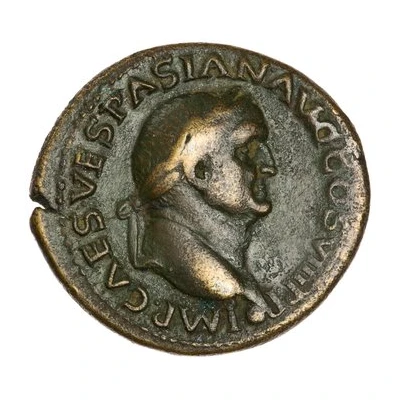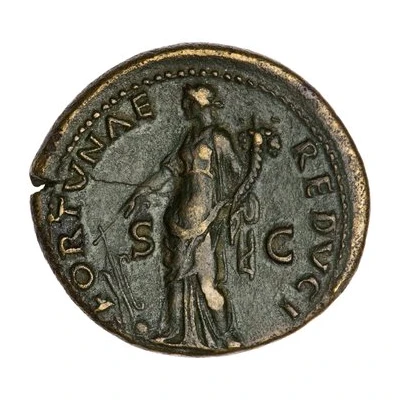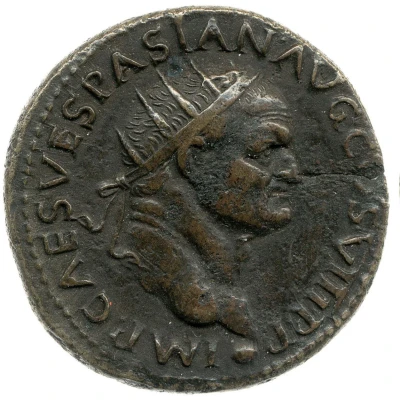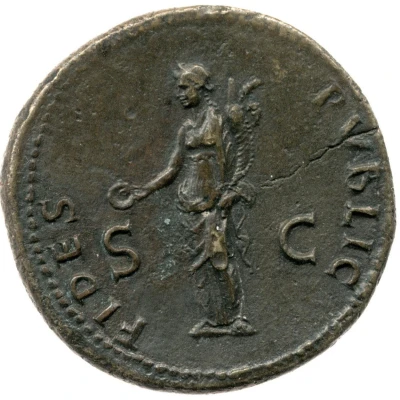


© American Numismatic Society (ANS)
Dupondius - Vespasian FORTVNAE REDVCI S C; Fortuna
| Bronze | 12.7 g | 28 mm |
| Issuer | Rome › Roman Empire (27 BC - 395 AD) |
|---|---|
| Emperor | Vespasian (Titus Flavius Vespasianus) (69-79) |
| Type | Standard circulation coin |
| Years | 77-78 |
| Value | 1 Dupondius = ⅛ Denarius |
| Currency | Denarius, Reform of Augustus (27 BC – AD 215) |
| Composition | Bronze |
| Weight | 12.7 g |
| Diameter | 28 mm |
| Shape | Round (irregular) |
| Technique | Hammered |
| Demonetized | Yes |
| Updated | 2024-10-06 |
| Numista | N#250131 |
|---|---|
| Rarity index | 91% |
Reverse
Fortuna, draped, standing left, holding rudder set on globe in right hand and cornucopiae in left.
Script: Latin
Lettering: FORTVNAE REDVCI S C
Translation:
Fortunae Reduci. Senatus Consultum.
Returning fortune. Decree of the senate.
Comment
Mass varies: 10.86–15.454 g;Diameter varies: 26–29.84 mm;
Source: Online Coins of the Roman Empire (OCRE)
Interesting fact
The Dupondius coin featuring Vespasian and Fortuna is interesting because it was minted during a time of significant economic reform in the Roman Empire. Vespasian, who ruled from 69-79 AD, introduced a new system of taxation and minting to address the empire's financial crisis. The Dupondius was one of the new coin denominations introduced during this period, and it was designed to be a more affordable alternative to the standard denomination of the day, the silver denarius. The fact that the coin features Fortuna, the goddess of luck and prosperity, on the reverse side, suggests that the coin was intended to promote the idea of good fortune and prosperity under Vespasian's rule.

